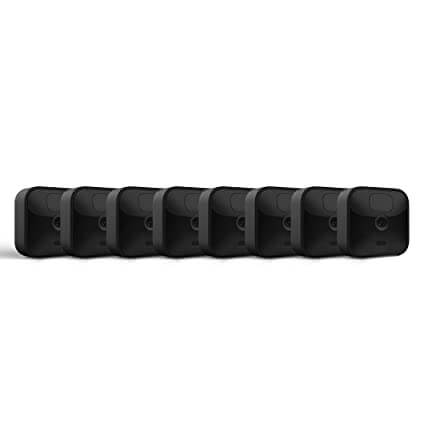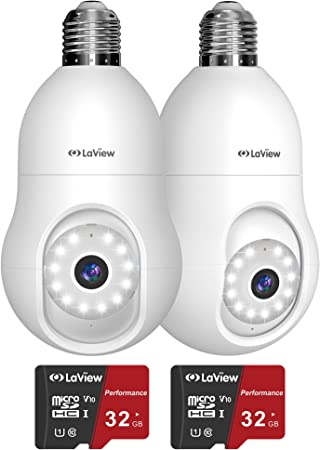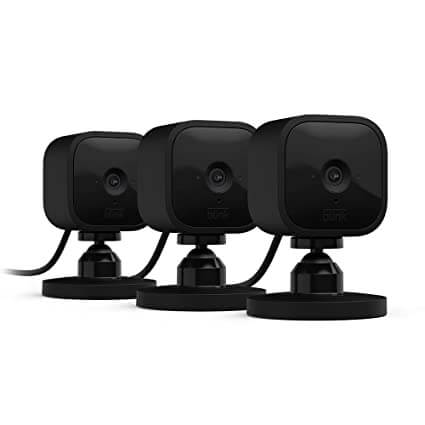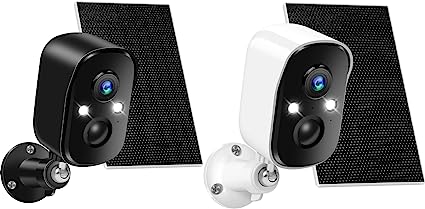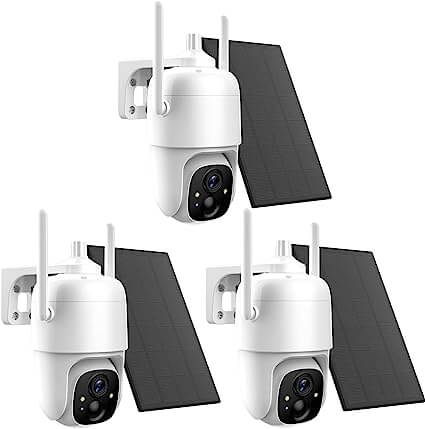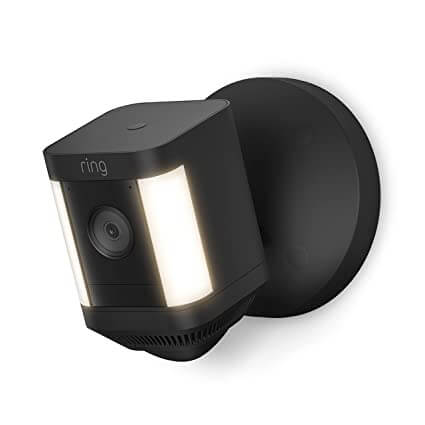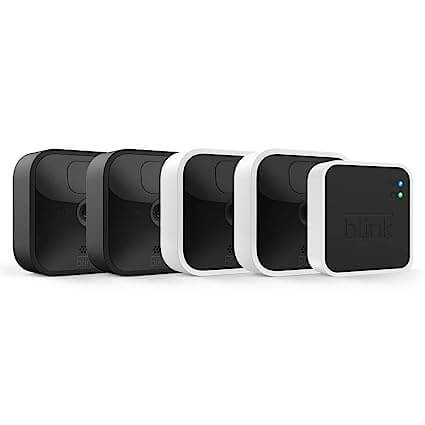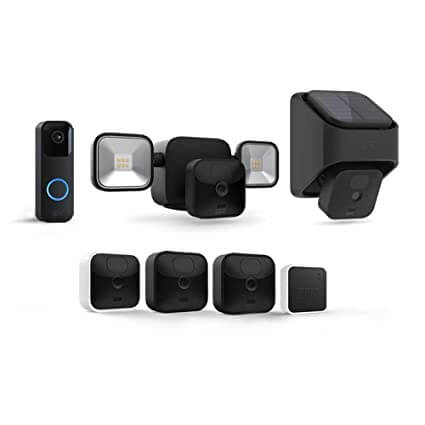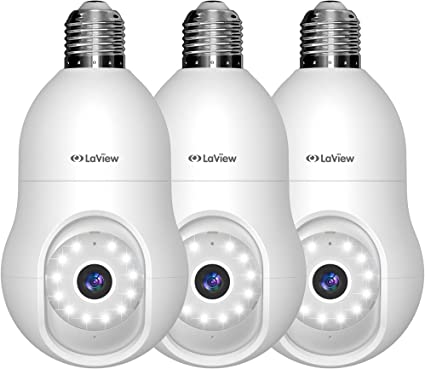How Wireless Camera Monitors Work: Exploring the Future of Surveillance
In today’s digital age, wireless camera monitors have revolutionized the way we approach surveillance and security. With their advanced technology and seamless connectivity, these systems provide an efficient and convenient way to monitor our homes, businesses, and loved ones. In this article, we’ll delve into the inner workings of wireless camera monitors, unraveling the mystery behind their operation and showcasing the transformative impact they have on our lives.
Wireless Camera Monitors: A Fusion of Innovation and Connectivity
Wireless camera monitors operate on the principles of wireless communication and cutting-edge technology. These systems consist of two main components: the wireless cameras and the monitor or viewing device. Let’s take a closer look at how these components work together to deliver a seamless surveillance experience:
- Wireless Cameras
- Wireless cameras are equipped with built-in transmitters that utilize wireless protocols such as Wi-Fi or Bluetooth to transmit video and audio signals.
- These cameras capture high-definition video footage, enabling clear and detailed visuals of the monitored area.
- Depending on the model, wireless cameras may feature additional functionalities like night vision, motion detection, and two-way audio communication.
- The cameras are powered by either battery or a wired power source, providing flexibility in terms of installation options.
- Monitor or Viewing Device
- The monitor or viewing device is responsible for receiving and displaying the video and audio signals transmitted by the wireless cameras.
- It can be a dedicated monitor, a computer, a smartphone, or a tablet, depending on the specific system and user preference.
- The monitor connects to the wireless cameras using the same wireless protocol, establishing a secure and reliable connection.
- Through the monitor, users can view the live feed from the cameras, access recorded footage, adjust settings, and receive real-time notifications.
Seamless Connectivity and Control at Your Fingertips
The true power of wireless camera monitors lies in their seamless connectivity and user-friendly control options. Here’s how they enhance the surveillance experience:
- Wireless Connectivity
- Wireless camera monitors use established wireless protocols like Wi-Fi or Bluetooth to transmit data, ensuring a stable and reliable connection.
- This wireless connectivity eliminates the need for complex wiring, allowing for hassle-free installation and flexibility in camera placement.
- Users can connect multiple cameras to a single monitor, expanding their surveillance coverage and achieving a comprehensive view of their premises.
- Mobile Apps and Remote Access
- Many wireless camera monitor systems offer dedicated mobile apps that provide convenient remote access to the system’s features and controls.
- With a simple tap on your smartphone or tablet, you can view live video feeds, play back recorded footage, receive alerts, and adjust camera settings from anywhere.
- This remote accessibility empowers you to stay connected and in control, even when you’re away from home or the monitored location.
Personal Experience: Embracing the Power of Wireless Camera Monitors
As someone who values the security of my home, I decided to invest in a wireless camera monitor system. The installation process was remarkably simple, thanks to the absence of complicated wiring. I strategically placed the wireless cameras around my property, ensuring comprehensive coverage of all entry points and vulnerable areas.
The wireless camera monitor system exceeded my expectations in terms of performance and convenience. The high-definition video quality, reliable wireless connectivity, and user-friendly mobile app allowed me to monitor my home effortlessly. Whether I was at work or traveling, I felt reassured knowing that I could access live feeds and receive instant notifications if any suspicious activity was detected.
Key Features of Wireless Camera Monitors: Empowering Your Surveillance Experience
Wireless camera monitors have become a game-changer in the world of surveillance, providing advanced features and cutting-edge technology that take home security to the next level. In this article, we will explore the key features that make wireless camera monitors a top choice for homeowners and businesses alike. Whether you’re looking to enhance the security of your property or monitor your loved ones, understanding these key features will help you make an informed decision and unlock the full potential of wireless camera monitors.
1. High-Definition Video Quality: Crystal Clear Imaging
One of the standout features of wireless camera monitors is their ability to capture high-definition video footage. With resolutions ranging from 720p to 4K, these cameras deliver crisp and detailed imaging, allowing you to see every important detail with clarity. Whether it’s identifying faces, reading license plates, or observing fine details, the high-definition video quality ensures that nothing goes unnoticed.
2. Remote Viewing and Mobile Access: Stay Connected Anywhere, Anytime
Wireless camera monitors offer remote viewing capabilities, allowing you to access live video feeds and recorded footage from your smartphone, tablet, or computer. Through dedicated mobile apps or web portals, you can stay connected to your surveillance system regardless of your location. Whether you’re at work, on vacation, or simply away from home, remote viewing ensures that you’re always in the loop and have peace of mind knowing that you can monitor your property in real-time.
3. Motion Detection and Alerts: Stay One Step Ahead
Motion detection is a vital feature that enhances the effectiveness of wireless camera monitors. These systems utilize advanced motion sensors to detect any movement within the camera’s field of view. When motion is detected, you receive instant alerts on your mobile device, keeping you informed of any potential threats or suspicious activity. This feature not only ensures prompt response but also minimizes false alarms by filtering out non-essential movements.
4. Night Vision Capability: Illuminating the Dark
Wireless camera monitors equipped with infrared (IR) LEDs offer impressive night vision capabilities. This feature allows the cameras to capture clear and detailed images even in complete darkness. Whether it’s monitoring your property during the night or keeping an eye on dimly lit areas, night vision ensures that your surveillance is not compromised by low-light conditions.
5. Two-Way Audio: Communicate and Deter
Some wireless camera monitors feature two-way audio functionality, enabling communication between you and the monitored area. This feature proves invaluable when you want to interact with family members, pets, or visitors. Additionally, the ability to speak through the camera’s built-in speaker can be an effective deterrent, allowing you to warn off intruders or unwelcome visitors.
6. Weather Resistance: Withstand the Elements
Wireless camera monitors designed for outdoor use often come with weather-resistant features. These cameras are built to withstand various weather conditions, including rain, snow, and extreme temperatures. This durability ensures reliable performance and longevity, making them suitable for year-round surveillance.
Personal Experience: Harnessing the Power of Key Features
Having installed a wireless camera monitor system at my home, I have experienced firsthand the transformative power of these key features. The high-definition video quality provided exceptional clarity, enabling me to identify individuals and objects with precision. The remote viewing capability allowed me to check on my property and loved ones from anywhere, ensuring peace of mind even when I was away. The motion detection and alerts feature proved crucial in detecting any unusual activity and provided me with timely notifications to take appropriate action. The night vision capability allowed me to monitor my surroundings even in complete darkness, providing a comprehensive surveillance solution day and night.
Advantages of Wireless Camera Monitors: Embracing the Future of Surveillance
Wireless camera monitors have revolutionized the world of surveillance, offering a host of advantages that have made them increasingly popular among homeowners and businesses. In this article, we will explore the key benefits of wireless camera monitors and how they can enhance your security and peace of mind. From easy installation to flexible placement, wireless connectivity, and advanced features, these systems offer a range of advantages that traditional wired surveillance systems simply cannot match.
1. Easy Installation: Say Goodbye to Complex Wiring
One of the most significant advantages of wireless camera monitors is the ease of installation. Unlike traditional wired systems that require complex and time-consuming wiring, wireless camera monitors can be set up quickly and hassle-free. Without the need for extensive wiring, you can save time, effort, and potential disruptions to your property. Whether you’re a DIY enthusiast or prefer professional installation, the simplicity of wireless camera monitors makes them accessible to everyone.
2. Flexible Placement: Freedom to Monitor Anywhere
Wireless camera monitors provide unparalleled flexibility when it comes to camera placement. Without being limited by the constraints of wiring, you can position the cameras wherever you need them most. Whether it’s monitoring your front door, backyard, or other vulnerable areas, wireless cameras can be easily relocated or added to your system. This flexibility allows you to adapt and customize your surveillance coverage as your needs evolve.
3. Wireless Connectivity: Seamless and Reliable
Gone are the days of tangled cables and connectivity limitations. Wireless camera monitors utilize advanced wireless technology, such as Wi-Fi or Bluetooth, to establish a seamless and reliable connection between the cameras and the monitoring device. This wireless connectivity ensures uninterrupted video streaming, real-time alerts, and remote access to your surveillance system. You can stay connected and in control, whether you’re at home or on the go.
4. Enhanced Security: Stay Informed and Protected
Wireless camera monitors offer a range of features that enhance your security and provide peace of mind. With motion detection capabilities, the cameras can automatically detect and alert you to any suspicious activity. This proactive approach allows you to respond promptly and take appropriate action. Additionally, remote access via mobile apps allows you to check on your property at any time, ensuring you’re always informed and in control.
5. Scalability: Expand as Your Needs Grow
Wireless camera monitors are highly scalable, allowing you to expand your surveillance system as your needs evolve. Whether you want to add more cameras to cover additional areas or integrate other devices, such as doorbell cameras or outdoor sensors, wireless camera monitors offer the flexibility to accommodate these expansions seamlessly. This scalability ensures that your surveillance system can grow with you, providing comprehensive coverage and enhanced security.
Personal Experience: Harnessing the Advantages
Having experienced the advantages of wireless camera monitors firsthand, I can attest to the transformative impact they have on home security. The easy installation process allowed me to set up my system without the need for professional assistance. The flexible placement options allowed me to position the cameras strategically, covering all the critical areas of my property. The wireless connectivity provided reliable video streaming and remote access, enabling me to monitor my home from anywhere. The enhanced security features, such as motion detection and real-time alerts, ensured that I was promptly notified of any potential threats or unusual activity.
Factors to Consider when Choosing Wireless Camera Monitors: A Comprehensive Guide
When it comes to selecting the right wireless camera monitors for your surveillance needs, there are several important factors to consider. With the wide variety of options available in the market, it’s essential to make an informed decision that aligns with your specific requirements. In this article, we will explore the key factors you should consider before investing in wireless camera monitors. Drawing from personal experience and industry expertise, we’ll help you navigate the decision-making process and choose a system that meets your security needs.
Coverage Area and Camera Quantity: Assessing Your Surveillance Needs
The first factor to consider is the coverage area and the number of cameras required to monitor it effectively. Evaluate the size of the area you want to cover and identify the critical zones that require surveillance. This will help you determine the number of cameras you need to install. Consider factors such as the layout of your property, entry points, blind spots, and any specific areas of concern. This assessment will ensure that you have sufficient camera coverage to monitor your premises effectively.
Video Quality and Resolution: Crystal Clear Imaging
Video quality and resolution play a crucial role in capturing clear and detailed footage. Look for wireless camera monitors that offer high-definition (HD) or even ultra-high-definition (UHD) resolution options. Higher resolution ensures sharper and more detailed images, enabling you to identify faces, objects, and other important details with precision. Opting for cameras with superior video quality will enhance your overall surveillance experience.
Wireless Range and Connectivity: Staying Connected
Wireless camera monitors rely on wireless connectivity to transmit video and audio signals to the monitoring device. It’s essential to assess the wireless range of the system, especially if you have a large property or areas with potential connectivity challenges. Ensure that the system offers a reliable and stable connection throughout the desired coverage area. Consider the wireless protocols supported (e.g., Wi-Fi, Bluetooth) and verify that they align with your existing network infrastructure for seamless integration.
Power Source and Battery Life: Ensuring Continuous Operation
Wireless camera monitors can be powered by either wired sources or batteries. Evaluate your power source options and determine the most suitable solution for your setup. If opting for battery-powered cameras, consider the expected battery life and the ease of recharging or replacing batteries. Ensure that the system offers sufficient battery longevity to meet your surveillance requirements without frequent interruptions.
Advanced Features and Customization: Tailoring to Your Needs
Explore the additional features and customization options offered by wireless camera monitors. These may include motion detection, night vision, two-way audio, pan-tilt-zoom (PTZ) capabilities, and remote access via mobile apps. Assess which features align with your specific security needs and preferences. Customizable settings such as motion sensitivity and recording schedules allow you to fine-tune the system to meet your requirements effectively.
Scalability and Integration: Future-Proofing Your System
Consider the scalability and integration capabilities of the wireless camera monitor system. Determine if it can accommodate future expansions or integration with other security devices. This flexibility allows you to add more cameras or integrate additional features as your surveillance needs evolve. It’s important to choose a system that can grow with you and adapt to any future security requirements.
Personal Experience: Choosing the Right Wireless Camera Monitor System
When I was in the process of selecting a wireless camera monitor system for my property, I carefully considered these factors to ensure I made the right choice. I assessed the coverage area and identified the critical zones that needed surveillance. I opted for wireless cameras with high-definition resolution, which provided me with clear and detailed footage. I also verified the wireless range and connectivity to ensure seamless transmission of video signals. Considering my power source options, I chose cameras with long-lasting batteries to ensure continuous operation. The advanced features like motion detection and remote access via mobile apps were crucial in tailoring the system to my specific needs. Lastly, I ensured that the system offered scalability and integration possibilities for future expansions.
Personal Experience and Testimonials: Real Stories of Wireless Camera Monitor Users
When it comes to making purchasing decisions, personal experiences and testimonials from actual users play a vital role. Hearing about the first-hand experiences of others who have used wireless camera monitors can provide valuable insights and help you make an informed choice. In this article, we will share real stories of personal experiences and testimonials from individuals who have incorporated wireless camera monitors into their security systems. These accounts will shed light on the benefits, challenges, and overall satisfaction of using these systems in real-life scenarios.
1. Sarah’s Story: Peace of Mind and Enhanced Security
Sarah, a homeowner, shares her personal experience with wireless camera monitors and how they have transformed her home security. Living in a neighborhood with occasional security concerns, Sarah decided to invest in a wireless camera monitor system. She recounts how the system provided her with peace of mind, knowing that her property was under surveillance even when she was away. Sarah particularly appreciates the remote access feature that allows her to check on her home through her smartphone, ensuring that everything is in order.
2. Mark’s Testimonial: Easy Installation and Flexibility
Mark, a small business owner, shares his testimonial about the installation process and flexibility of wireless camera monitors. He highlights how easy it was to set up the system without the need for complex wiring. Mark emphasizes the flexibility of wireless camera monitors, allowing him to position the cameras wherever they were needed most, even in challenging locations. This flexibility allowed him to adapt the surveillance coverage as his business grew and changed.
3. Jessica’s Experience: Quick Response and Enhanced Safety
Jessica, a parent, recounts her personal experience with wireless camera monitors and the impact they had on her family’s safety. She shares an incident where the motion detection feature alerted her to a potential security breach in her backyard. The quick response allowed Jessica to promptly assess the situation, ensuring the safety of her children and providing valuable evidence to authorities. She credits wireless camera monitors for their role in enhancing the safety and security of her home.
4. John’s Testimonial: Scalability and Integration
John, a property manager, shares his testimonial about the scalability and integration capabilities of wireless camera monitors. With multiple properties to monitor, John emphasizes how wireless camera monitors provided a scalable solution. He could easily add or relocate cameras as needed, ensuring comprehensive coverage across his properties. John also mentions the integration possibilities with other security devices, such as smart locks and sensors, which further enhanced the effectiveness of the surveillance system.
FAQ: Your Comprehensive Guide to Wireless Camera Monitors
If you’re considering investing in wireless camera monitors for your security needs, you likely have some questions. In this article, we have compiled a list of frequently asked questions (FAQ) to provide you with the answers you need. Drawing from personal experiences and expert insights, we aim to address common concerns and provide you with a comprehensive understanding of wireless camera monitors.
1. What are wireless camera monitors?
Wireless camera monitors are surveillance systems that consist of wireless cameras and a central monitoring unit. These systems use wireless technology to transmit video and audio signals from the cameras to the monitor, allowing you to view real-time footage and recordings from a remote location.
2. How do wireless camera monitors work?
Wireless camera monitors work by capturing video and audio through the cameras and wirelessly transmitting the signals to the monitoring unit. The monitoring unit receives and displays the footage, providing you with a live view of the monitored area. Some systems also allow for remote access through mobile apps, enabling you to monitor your property from anywhere using your smartphone or tablet.
3. Are wireless camera monitors easy to install?
Yes, wireless camera monitors are generally easy to install. Most systems are designed for DIY installation, with step-by-step instructions provided in the user manual. The absence of complex wiring makes the installation process simpler and less time-consuming. However, if you prefer professional assistance, you can hire a technician to install the system for you.
4. Can I expand the number of cameras in my wireless camera monitor system?
Yes, most wireless camera monitor systems offer the flexibility to expand the number of cameras. You can start with a basic set and add additional cameras as needed. Ensure that the system you choose supports the desired number of cameras and allows for easy integration and synchronization.
5. What about video quality and resolution?
Video quality and resolution are essential considerations when choosing wireless camera monitors. Higher resolution cameras offer clearer and more detailed footage, enabling you to capture important details such as faces or license plate numbers. Opt for systems that provide high-definition (HD) or ultra-high-definition (UHD) resolution options for optimal clarity.
6. How far can the wireless signal reach?
The wireless range of a camera monitor system varies depending on several factors, including the system’s design, frequency band, and environmental conditions. In general, wireless signals can reach up to a few hundred feet in an open area. However, obstructions like walls and interference from other wireless devices may reduce the range. It’s important to test the signal strength in your specific environment to ensure reliable coverage.
